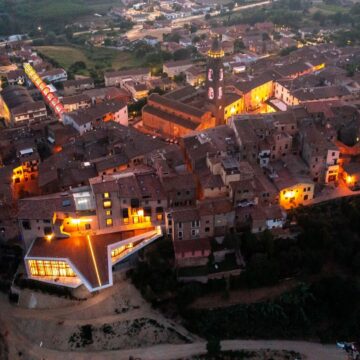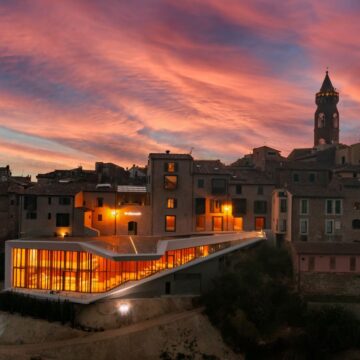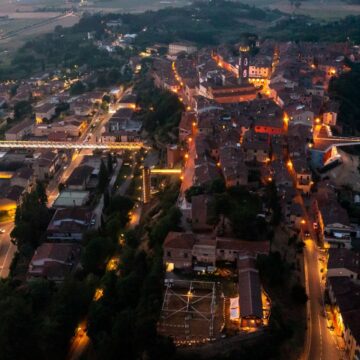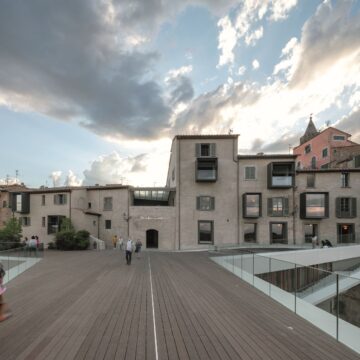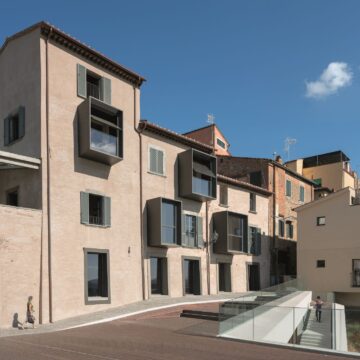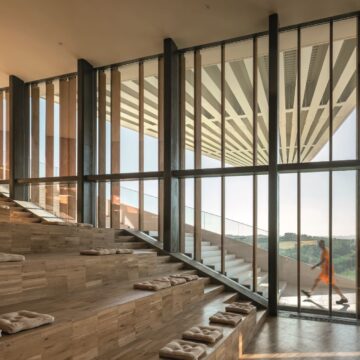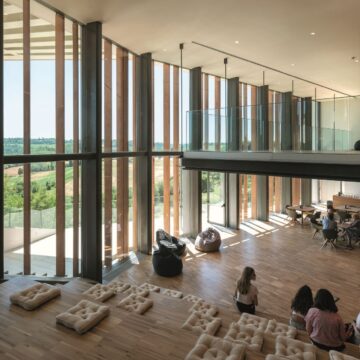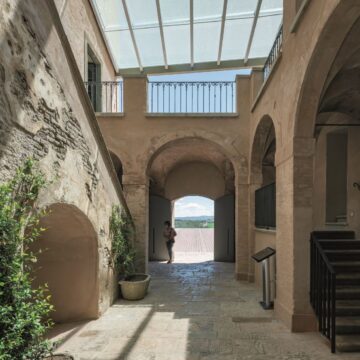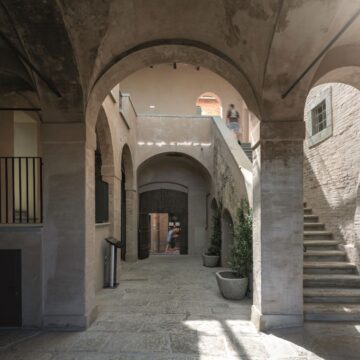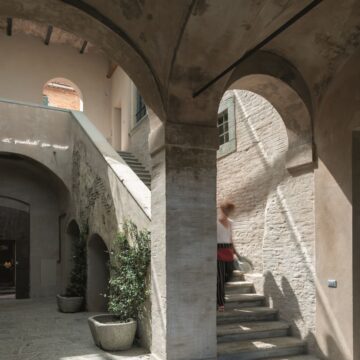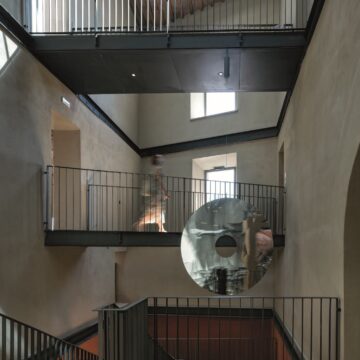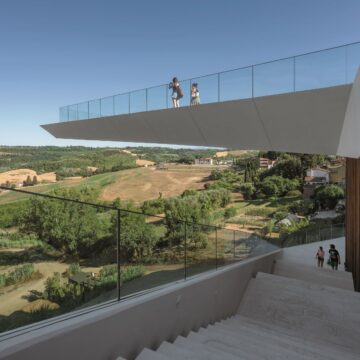In the centre of Peccioli, a typical Tuscan Hilltown, MC A – Mario Cucinella Architects renovated an historic building along via Carraia, now transformed into Palazzo Senza Tempo, a meeting space for the community.
Palazzo Senza Tempo comprises a range of renovated and re-purposed town houses: facing east from the very edge of the town, these enjoy direct views across the valley.
Today, the old houses are connected both internally and externally to a wholly new two-storey building rising from via dei Bastioni below.
Spread over several levels, together the old and new elements of the Palazzo complex comprise apartments, galleries for temporary and permanent exhibitions, study and co-working spaces, a multimedia library, a café and restaurant, public meeting rooms and a spectacular cantilevered 600 m2 terrace, or piazza, projecting over the landscape beyond.
The facades of the renovated buildings along via Carraira incorporate voids, skylights and bay windows that, designed to add new points of view from the interior to the town, bring welcome daylight inside; in addition, the new glass roof placed over the passage of a historic courtyard completes the visual permeability of the spaces.
The renovated buildings on via Carraira form an interconnected whole interspersed by rooms with venerable wood beamed ceilings and, unexpectedly, a dramatic open stone stair, with successions of tight, curving narrow alleys leading to wide and open civic spaces.
Reached externally down a monumental public stair or internally, the palazzo reveals its new two-storey building; glazed on three sides, this provides framed views of the landscape beyond tall windows.
Lined in wood and with a detailed level of craftsmanship, this is a contemporary building that pays full respect to the historic fabric and setting of Peccioli; it demonstrates how truly modern structures can be a natural part of Italian hill towns wishing to be far more than living museums.


